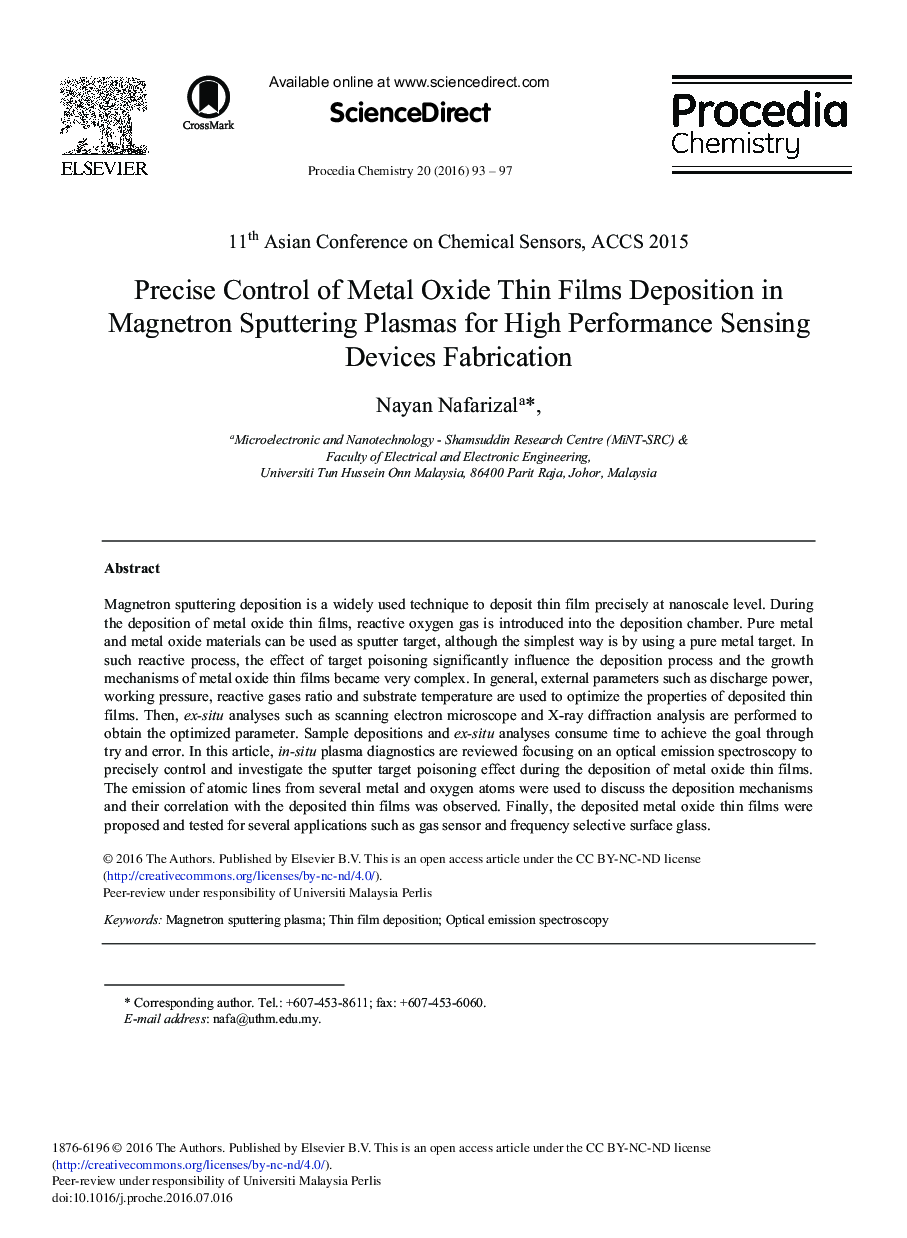| Article ID | Journal | Published Year | Pages | File Type |
|---|---|---|---|---|
| 4910996 | Procedia Chemistry | 2016 | 5 Pages |
Magnetron sputtering deposition is a widely used technique to deposit thin film precisely at nanoscale level. During the deposition of metal oxide thin films, reactive oxygen gas is introduced into the deposition chamber. Pure metal and metal oxide materials can be used as sputter target, although the simplest way is by using a pure metal target. In such reactive process, the effect of target poisoning significantly influence the deposition process and the growth mechanisms of metal oxide thin films became very complex. In general, external parameters such as discharge power, working pressure, reactive gases ratio and substrate temperature are used to optimize the properties of deposited thin films. Then, ex-situ analyses such as scanning electron microscope and X-ray diffraction analysis are performed to obtain the optimized parameter. Sample depositions and ex-situ analyses consume time to achieve the goal through try and error. In this article, in-situ plasma diagnostics are reviewed focusing on an optical emission spectroscopy to precisely control and investigate the sputter target poisoning effect during the deposition of metal oxide thin films. The emission of atomic lines from several metal and oxygen atoms were used to discuss the deposition mechanisms and their correlation with the deposited thin films was observed. Finally, the deposited metal oxide thin films were proposed and tested for several applications such as gas sensor and frequency selective surface glass.
